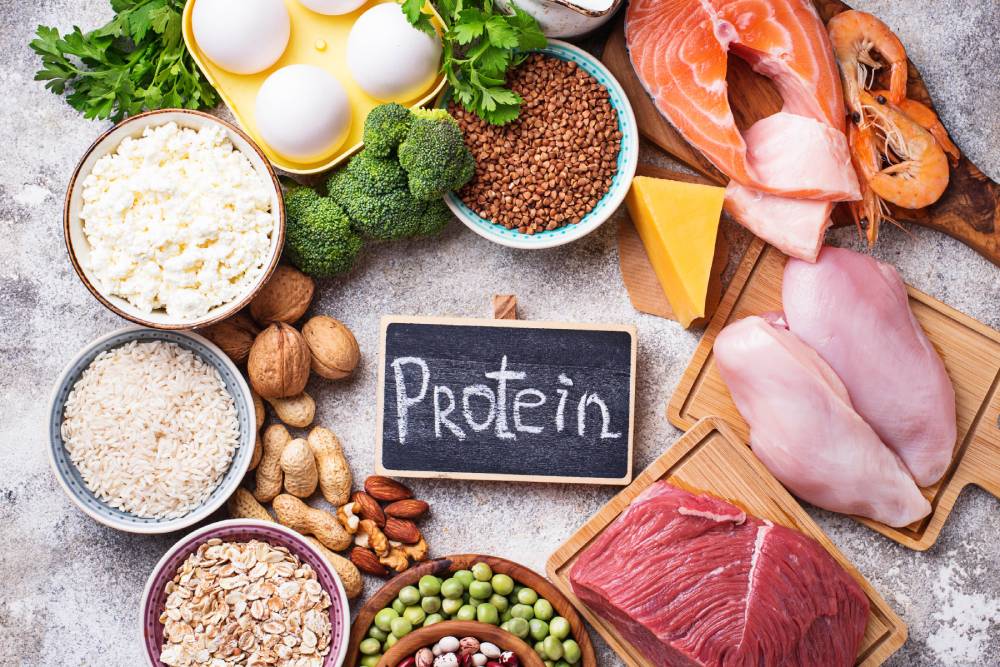Sports
Top 10 Optimal Fueling Strategies for Long-Distance Runners to Go the Extra Mile


Long-distance running places immense physical demands on the body, requiring a strategic approach to fueling in order to optimize performance and endurance. As any seasoned runner knows, the right fueling strategies can make all the difference in going the extra mile and achieving peak performance.
From carbohydrate loading to meal timing and supplement efficacy, there are numerous factors to consider when it comes to fueling for long-distance runs.
In this discussion, we will explore the top 10 optimal fueling strategies that can give long-distance runners the edge they need to push their limits and achieve their best performance.
Key Takeaways
- Carbohydrate loading is important for long-distance runners to fuel their muscles and provide energy during their runs.
- Maintaining electrolyte balance is crucial for proper muscle function and preventing dehydration during long-distance running.
- Energy gels can be a convenient and effective source of quick energy for long-distance runners during their runs.
- Proper recovery nutrition, including protein intake, is essential for muscle repair and maintenance after long-distance runs.
Carbohydrate Loading
What is the most effective method for carbohydrate loading to optimize long-distance running performance?
Carbohydrate loading, also known as glycogen supercompensation, is a strategy used by many long-distance runners to maximize their glycogen stores before a race or endurance event. The most effective method for carbohydrate loading involves a strategic increase in carbohydrate intake while tapering training volume to enhance glycogen storage in the muscles.
Research suggests that the traditional method of carbohydrate loading, which involves several days of high carbohydrate intake (about 8-12 grams of carbohydrate per kilogram of body weight), is effective in maximizing muscle glycogen stores. However, more recent studies have proposed a modified approach, known as the ‘glycogen-depletion and low-carbohydrate intake with high-carbohydrate availability’ method. This method involves a period of training with low carbohydrate availability followed by a few days of high carbohydrate intake, resulting in similar glycogen levels but with reduced risk of gastrointestinal distress.
In practical terms, long-distance runners can benefit from the traditional or modified carbohydrate loading methods depending on individual preferences and tolerance. It is important to experiment with different approaches during training to determine which method works best for optimizing long-distance running performance.
Electrolyte Balance
Maintaining optimal electrolyte balance is crucial for long-distance runners. This balance supports proper muscle function, hydration, and overall performance during endurance events. Electrolytes such as sodium, potassium, calcium, and magnesium play a significant role in regulating muscle contractions, nerve function, and fluid balance.
Here are four evidence-based strategies to help long-distance runners maintain optimal electrolyte balance:
- Hydration: Adequate hydration is essential for maintaining electrolyte balance. However, excessive fluid intake without proper electrolyte replenishment can lead to dilutional hyponatremia. Long-distance runners should focus on consuming fluids that contain electrolytes to support hydration and maintain proper electrolyte balance.
- Balanced Diet: Consuming a well-balanced diet rich in fruits, vegetables, nuts, and seeds can help ensure adequate intake of essential electrolytes such as potassium and magnesium.
- Electrolyte Supplements: In some cases, long-distance runners may require electrolyte supplementation, especially when training or competing in hot and humid conditions where electrolyte loss through sweat is increased.
- Post-Run Recovery: After long runs, replenishing electrolytes through sports drinks or electrolyte-rich foods can aid in restoring electrolyte balance and supporting muscle recovery.
Energy Gels
When it comes to fueling strategies for long-distance runners, energy gels play a crucial role in maintaining energy levels during prolonged exercise.


Timing for the intake of energy gels and the types of gels used are important considerations for optimizing performance and preventing fatigue.
Understanding the best practices for incorporating energy gels into a runner’s fueling plan can significantly impact their endurance and overall race performance.
Timing for Gels
Proper timing of energy gel consumption is a critical aspect of fueling strategies for long-distance runners. To optimize performance, runners should consider the following timing guidelines for energy gel intake:
- Early in the race: Consume an energy gel 15-30 minutes before the start to provide an initial boost of energy.
- During long runs: Take an energy gel every 45-60 minutes during prolonged exercise to maintain glycogen levels and sustain energy.
- With water: Always consume energy gels with water to aid absorption and prevent dehydration.
- Avoiding gastrointestinal distress: Experiment with timing during training to find the best schedule for your body, and avoid taking gels too close to each other to prevent stomach discomfort.
Types of Gels
Energy gels, also known as endurance gels, are concentrated sources of carbohydrates and electrolytes designed to provide a quick and convenient energy boost for long-distance runners.
There are various types of energy gels available in the market, each with its own unique composition and benefits. Some gels contain caffeine, which can provide an extra mental and physical boost during endurance activities.
Others are formulated with amino acids, such as branched-chain amino acids (BCAAs), which may help reduce muscle fatigue and improve endurance. Additionally, there are energy gels with added electrolytes like sodium and potassium, which can aid in maintaining proper fluid balance and preventing cramping during prolonged exercise.
It’s essential for runners to experiment with different types of gels during training to determine which ones work best for their individual needs and preferences.
Recovery Nutrition
Nutrition plays a critical role in the post-exercise recovery of long-distance runners, aiding in muscle repair and glycogen replenishment. After a long run, it’s important to refuel the body with the right nutrients to optimize recovery and prepare for future training sessions.
Here are some evidence-based recovery nutrition strategies for long-distance runners:
- Protein Intake: Consuming protein after a long run is crucial for muscle repair and growth. Aim for 15-25 grams of high-quality protein within 30 minutes of finishing your run.
- Carbohydrate Replenishment: Replenishing glycogen stores is essential for long-distance runners. Consume 1-1.5 grams of carbohydrates per kilogram of body weight within 30 minutes of finishing your run.
- Hydration: Rehydration is vital for recovery. Drink water to replace fluids lost during the run, and consider consuming electrolyte-rich fluids to replenish lost minerals.
- Anti-Inflammatory Foods: Consuming foods rich in antioxidants and omega-3 fatty acids can help reduce inflammation and aid in recovery. Incorporate foods like berries, fatty fish, and nuts into your post-run meals.
Hydration Plans
Following a rigorous long-distance run, ensuring adequate hydration is paramount for supporting the body’s recovery process and optimizing performance for subsequent training sessions. Dehydration can significantly impair endurance and performance, making it crucial for long-distance runners to have a well-thought-out hydration plan.


The American College of Sports Medicine recommends that athletes should aim to prevent excessive dehydration by limiting fluid loss to 2% of body weight. This can be achieved by consuming 5-10 ml of fluid per kilogram of body weight in the 4 hours leading up to the run.
During the run, aiming to drink 150-350 ml of fluid every 15-20 minutes is advisable. Post-run, replacing fluid losses by consuming 16-24 oz of fluid for every pound lost during the run is recommended. Electrolyte balance is also essential, especially for longer runs, and can be maintained through consuming electrolyte-rich drinks or snacks.
It’s important for runners to personalize their hydration plans based on individual sweat rates, weather conditions, and training intensity. By staying consistently well-hydrated, long-distance runners can optimize their performance and enhance their overall running experience.
Protein Intake
When it comes to fueling long-distance runners, protein intake plays a crucial role in supporting muscle repair and recovery. Understanding the timing of protein intake, incorporating complete protein sources, and considering protein supplementation are key points to consider for optimizing performance and reducing the risk of injury.
These strategies can help runners meet their protein needs and maintain muscle mass, ultimately contributing to improved endurance and overall race performance.


Protein Timing
To optimize muscle recovery and adaptation, timing protein intake around exercise is a key consideration for long-distance runners. Proper timing can enhance the benefits of protein consumption, aiding in the repair and growth of muscle tissue.
Here are some practical strategies for timing protein intake to support long-distance running performance:
- Pre-Exercise: Consuming a small amount of protein (e.g., yogurt, a protein shake) 30-60 minutes before a long run can provide amino acids to kickstart muscle repair and prevent muscle breakdown during exercise.
- Post-Exercise: Consuming a protein-rich snack or meal within 30 minutes after a long run can aid in muscle recovery and replenish glycogen stores.
- Bedtime: Consuming a slow-digesting protein source (e.g., casein protein) before bedtime can support overnight muscle repair and growth.
- Throughout the Day: Distributing protein intake evenly across meals and snacks can help maintain a consistent supply of amino acids for muscle repair and growth.
Complete Protein Sources
Adequate protein intake is essential for long-distance runners to support muscle repair, recovery, and overall performance. Complete protein sources, containing all essential amino acids, are crucial for meeting the heightened demands of endurance training.
Opt for lean meats like chicken, turkey, and beef, as well as fish and dairy products such as Greek yogurt and cottage cheese. Plant-based options like quinoa, chia seeds, and hemp seeds also provide complete protein. These options not only aid in muscle repair but also contribute to satiety, helping runners maintain a healthy weight and energy balance.
Including a variety of complete protein sources in meals and snacks throughout the day ensures that runners obtain the necessary building blocks for optimal muscle function and overall performance.


Protein Supplementation
Protein supplementation can be a valuable addition to the dietary intake of long-distance runners, complementing the complete protein sources previously discussed and aiding in meeting the elevated muscle repair and recovery needs associated with endurance training.
When considering protein supplementation, long-distance runners should keep the following in mind:
- Timing: Consume protein supplements within 30 minutes after a long run to support muscle recovery.
- Quality: Opt for high-quality protein supplements such as whey protein isolate to ensure efficient muscle repair.
- Quantity: Aim for 20-30 grams of protein per serving to maximize muscle protein synthesis.
- Individualization: Tailor protein supplementation to personal dietary needs and consult a nutritionist if necessary.
Meal Timing
When is the optimal time to consume meals for long-distance runners to maximize performance and recovery?
Meal timing is crucial for long-distance runners as it can significantly impact their performance and ability to recover effectively. To optimize performance and aid in recovery, it is recommended for long-distance runners to consume a balanced meal 3-4 hours before a run. This meal should consist of carbohydrates for energy and a moderate amount of protein to support muscle function.
Additionally, consuming a small snack or meal containing carbohydrates and protein within 30 minutes to 2 hours after a long run can help replenish glycogen stores and support muscle repair.


For runs lasting longer than 90 minutes, consuming easily digestible carbohydrates, such as energy gels or sports drinks, during the run can help sustain energy levels. However, it’s important to practice this strategy during training to determine individual tolerance and preferences.
Fat Adaptation
Fat adaptation is an important aspect of long-distance running performance, as it involves the body’s ability to utilize fat as a primary fuel source. This process, known as metabolic flexibility, allows athletes to sustain energy levels over extended periods of exercise.
Understanding the role of fat as fuel and achieving metabolic flexibility can significantly impact an athlete’s endurance and overall performance.
Fat as Fuel
Leveraging the body’s capacity to utilize fat as a primary source of fuel during endurance exercise holds significant potential for enhancing performance and metabolic efficiency in long-distance runners. Fat adaptation, the process of training the body to use fat as a primary fuel source, can benefit long-distance runners by improving endurance and reducing the reliance on glycogen stores.
To effectively utilize fat as fuel, consider the following strategies:


- Gradual Adaptation: Slowly increase the proportion of dietary fat while decreasing carbohydrates to encourage the body to become efficient at utilizing fat for energy.
- Training in a Fasted State: Incorporate some training sessions without consuming carbohydrates to enhance the body’s ability to burn fat during exercise.
- Proper Hydration: Ensure adequate hydration to support fat metabolism and prevent dehydration, which can hinder fat utilization.
- Balanced Nutrition: Consume a well-rounded diet that includes healthy fats, lean proteins, and complex carbohydrates to support overall performance and recovery.
Metabolic Flexibility
To optimize the body’s ability to utilize fat as a primary source of fuel, developing metabolic flexibility through targeted dietary and training strategies is crucial for enhancing long-distance running performance and endurance.
Metabolic flexibility refers to the ability of the body to efficiently switch between utilizing carbohydrates and fats for fuel, depending on availability and energy demands. This adaptation is achieved through specific dietary adjustments, such as reducing carbohydrate intake and increasing healthy fat consumption, to train the body to rely more on fat for energy.
Additionally, incorporating training sessions that specifically target fat metabolism, such as long runs at a moderate pace, can further enhance metabolic flexibility.
Supplement Efficacy
Supplements have been widely studied in the context of long-distance running, with research indicating their potential to enhance performance and support overall health and recovery for athletes. When considering supplement efficacy for long-distance runners, it is essential to focus on evidence-based options that can genuinely benefit performance and well-being.
Here are four key supplements that have shown promise in supporting long-distance runners:


- Electrolytes: Long runs can deplete essential electrolytes like sodium and potassium. Supplementing with electrolyte tablets or drinks can help maintain proper hydration and prevent cramping during endurance runs.
- Branched-Chain Amino Acids (BCAAs): BCAAs have been shown to reduce muscle damage and support muscle recovery during prolonged exercise. Including BCAA supplements in a long-distance runner’s fueling strategy may aid in preserving muscle mass and enhancing endurance.
- Omega-3 Fatty Acids: Omega-3s have anti-inflammatory properties that can be beneficial for reducing exercise-induced inflammation and supporting joint health in long-distance runners.
- Vitamin D: Many long-distance runners have been found to have insufficient levels of vitamin D, which is crucial for bone health and immune function. Supplementing with vitamin D may help maintain overall health and support recovery post-exercise.
When considering incorporating supplements, it’s important for runners to consult with a healthcare professional or a sports nutritionist to ensure that the supplements align with their individual needs and goals.
Pre-Race Meals
A critical aspect of long-distance runners’ preparation for a race is carefully planning their pre-race meals to optimize energy levels and performance. The goal of a pre-race meal is to provide a balance of carbohydrates, proteins, and fats while being easy to digest. Consuming a meal 3-4 hours before the race allows for adequate digestion and absorption of nutrients. Opt for familiar foods that are well-tolerated to avoid any gastrointestinal discomfort on race day.
A pre-race meal should primarily consist of carbohydrates, as they are the body’s primary energy source during endurance exercise. Good options include oatmeal, whole grain bread, or pasta. Including a moderate amount of lean protein, such as eggs or yogurt, can help with muscle repair and maintenance during the race. Additionally, a small amount of healthy fats, like nuts or seeds, can provide sustained energy.
Hydration is equally important. Alongside the meal, ensure adequate fluid intake, aiming for 5-7 ml/kg of body weight in the 2-4 hours before the race. However, it’s essential to avoid overeating or trying new foods on race day, as this may lead to unwanted discomfort or digestive issues.
Ultimately, the key is to find a pre-race meal that works best for the individual runner through trial and error during training.


Frequently Asked Questions
How Can Long-Distance Runners Maintain Their Energy Levels During a Race Without Relying Solely on Energy Gels and Supplements?
Long-distance runners can maintain energy levels during a race by incorporating a balanced mix of whole foods, such as bananas, energy bars, and nuts, to provide sustained energy and essential nutrients without relying solely on energy gels and supplements.
Are There Any Specific Recovery Nutrition Strategies for Vegan or Vegetarian Long-Distance Runners?
For vegan or vegetarian long-distance runners, recovery nutrition strategies should focus on plant-based protein sources like lentils, quinoa, and tofu to support muscle repair. Additionally, incorporating iron-rich foods such as spinach and legumes can aid in replenishing iron stores.
What Are Some Effective Hydration Plans for Runners Who Are Training in Hot and Humid Conditions?
When training in hot and humid conditions, runners should prioritize hydration to maintain performance and prevent heat-related illnesses. It’s crucial to drink plenty of fluids before, during, and after exercise, considering electrolyte replacement and adjusting intake based on sweat rate.
How Can Long-Distance Runners Incorporate Fat Adaptation Into Their Training and Race Day Nutrition Plans?
Long-distance runners can optimize fat adaptation by gradually reducing carbohydrate intake and increasing healthy fats in their diet. This helps the body become more efficient at using fat as a fuel source during long races, enhancing endurance and preserving glycogen stores.
Are There Any Pre-Race Meal Options for Long-Distance Runners Who Have Dietary Restrictions or Food Allergies?
For long-distance runners with dietary restrictions or food allergies, pre-race meal options can include easily digestible, nutrient-dense foods like rice cakes with nut butter, quinoa salad with veggies, or a smoothie with plant-based protein. It’s important to experiment and find what works best for individual needs.




Hi, I’m Kyle Rivera, a news journalist and blog editor with the Daily Evening News. A TCU alum with a flair for storytelling, I spend my days uncovering impactful stories and my evenings exploring the realms of yoga, cycling, and whimsically bad poetry.
Travel is my escape; I’ve trekked from Tokyo’s neon lights to Iceland’s tranquil vistas. But no journey is complete without Mogli, my Golden Retriever, who’s redefining his breed standards in the most charming ways.
I love connecting with fellow travelers, yogis, cyclists, and anyone who enjoys a laugh at my poetic attempts. If you’re into stories that inspire, travel escapades, or just want to see what Mogli and I are up to, I’d love to hear from you on Instagram or Facebook. Let’s share tales and tips from around the globe!

